The X Button
Polarity Position
by Todd Ciolek,

Some of you may remember the frustrations of growing up with a Sega Genesis and a fondness for RPGs. Others among you may not remember, possibly because you're actually younger than the Sega Genesis. Or perhaps, like me, you had only a Super NES. As a Nintendo loyalist, I nonetheless sympathized with the Sega kids who wanted more RPGs on their system, especially if they couldn't afford a Sega CD and the Lunar games.
One fleeting dream among Genesis RPGs was Taito's port of the original Lufia and the Fortress of Doom. Now, Lufia wasn't the best RPG on the Super NES, as I mentioned during my Neverland Company history harangue a few months ago. Yet it had a good opening, a good soundtrack, and the good fortune to arrive during an RPG gap in 1993. And in 1994, Lufia was supposed to have a Sega Genesis port. It never arrived.
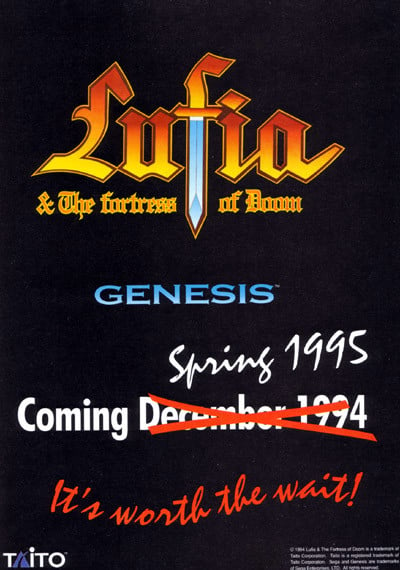
Taito took out several magazine ads for the Genesis version of Lufia, even going so far as to put a huge fold-out poster in Game Players. All of these spots were strangely free of artwork or screenshots, and the poster had nothing but the game's title and a tagline. Taito even went through the trouble of putting out follow-up ads when the game was delayed to 1995.
This heralded reissue of Lufia and the Fortress of Doom never arrived, and it kept RPG fans curious. For a long time, the best evidence of the game was some very early footage from a trade show. Yet earlier this month, a programmer from the long-gone California-based developer Teknocrest revealed the truth about Lufia for the Sega Genesis.
The story: some programmers had only six months to port Lufia to the Genesis, a job made all the tougher by the game's stubborn code and a lack of help from the original developers. Knowing that it was a lost cause, Teknocrest strung Taito along with demos for several months until the project's failure became obvious.
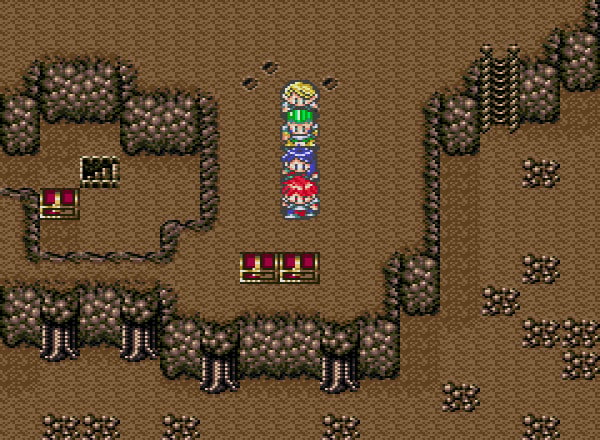
Fortunately, a little piece of Lufia survived on the Genesis. The same programmer shared a very early scrap of the game, consisting of the title screen and a single room. The player's party can walk everywhere, barely interacting with anything, and there are no battles to be had. At least it shows all of the characters following the hero around. That was always helpful in old RPGs, and I blame any and all problems the genre has today on this feature's adulteration. Final Fantasy XIII would get far fewer complaints if all the characters scuttled along in single file.
Perhaps it's not even any real loss, as anyone who cared about Lufia probably tracked down the Super NES version long ago. But it's Lufia and the Fortress of Doom for the Sega Genesis, and it's finally out after all these years.
NEWS
FORBIDDEN MAGNA IS AN INNKEEPING FANTASY
Speaking of Lufia and Neverland Company and whatnot, Forbidden Magna is now taking shape over at Marvelous Entertainment. It's very much the child of the Rune Factory series and the remnants of Neverland. The director is Masahide Miyata, who headed up the Rune Factories, all of the Lufia games worth playing, and experiments like Cima: The Enemy. And much like Rune Factory, Forbidden Magna stirs together RPG questing and everyday business.

Forbidden Magna follows Lux, a marginally successful innkeeper who meets up with several “spirits” in the form of young ladies (all designed by relative newcomer Konoe Ototsugu). The sword-hefting Charlotte, the spear-fighter Diana, and the sharpshooter Beatrice all join Lux as he ventures around the countryside. The unfolding battles let the characters run around freely in what's dubbed the Connect Lead Time system, which is probably best not abbreviated.
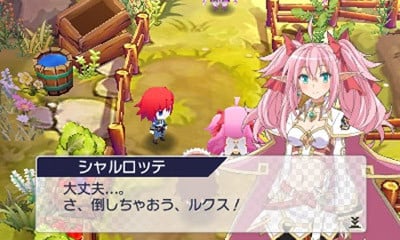
The game's official website finds producer Yoshifumi Hashimoto recalling how he wanted to make something new after completing Rune Factory 4. While Forbidden Magna is technically a fresh series, it sticks with familiar hooks—the art is typical of today's anime-toned RPGs, the character models are all huge-headed, and Charlotte and her fellow spirits don maid outfits when they help out in Lux's little hotel. Still, it's one to watch for fans of Rune Factory, Neverland Company, and the fascinating, untapped realm of innkeeping games.
PERSONA GAMES GET ROUGH RELEASE DATES
We scarcely doubted that the new crop of Persona games would make it to North America. After all, Persona 4: Dancing All Night is the least orthodox of the bunch, and even a pop-idol dancing game can spread to these shores if it's backed by Persona.

Dancing All Night also has the cutest little logo of just about any game in the Persona line or the larger Shin Megami Tensei empire. It's one of those “subject to change” promotional images, but I hope it sticks around.
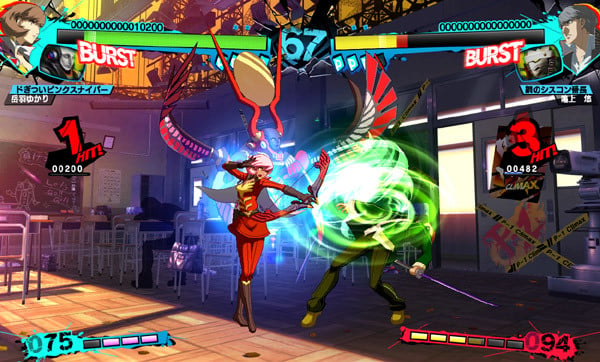
Atlus is wisely spreading out the Persona assault. This fall, we'll get Persona Q: Shadow of the Labyrinth, a 3DS RPG that unites characters from Persona 3 and 4 into one big high-school dungeon crawl. Joining it around the same time is Persona 4 Arena Ultimax, which expands the recent Persona 4 fighting game with a new storyline and animated scenes, the additions of Yukari and Junpei from Persona 3, and an all-new swordsman named Sho Minazuki. Persona Dancing All Night, a rhythm game starring Persona 4's Rise, her rival Kanami, and several other Persona regulars, has to wait until 2015. After all of this, we'll get Persona 5 at last in 2015. It's still a very vague sort of game, all about people breaking free of societal shackles, and it'll be out in Japan later this year. You could hope for a December 2014 launch in Japan and a January 2015 date in North America…but you probably shouldn't.
BLACKMORE KINDA LOOKS LIKE THIS
When the Kickstarter for the Victorian puzzle-adventure game Blackmore kicked off, there weren't any actual screens of the game. Most of us were primarily excited about its pedigree. It's the creation of localization maestro Jeremy Blaustein (Snatcher, Metal Gear Solid), with art by Satoshi Yoshioka (Snatcher, Policenauts) and music by Konami's Motoaki Furukawa. Fortunately, we now have some mock-ups of just what the game will be.
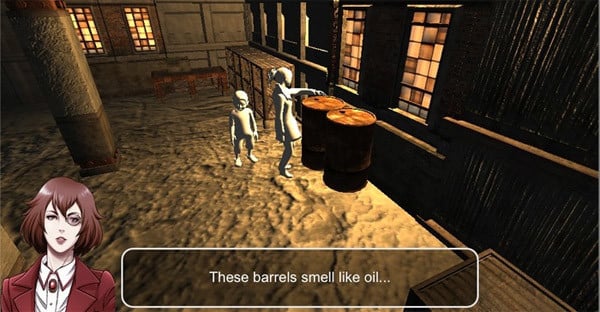
The screens show the art and uncolored figures of heroine Emma Honda-Blackmore and her ragamuffin android Descartes. The two roam about a grim, technologically advanced London of 1888 while trying to solve a gruesome crime, and their world's promoted as a steampunk vision. The screenshots are lacking in the cogs and mist and analytical engines that often define such settings, but all of that's a bit overused, isn't it? I'll be just fine in Blackmore restrains its clockwork Victorian stage design.
DOWNLOAD REVIEWS: FEBRUARY
GIGANTIC ARMY Developer: Astro Port
Developer: Astro Port Publisher: Nyu Media Platform: PC MSRP: $5.99 Side-scrolling mecha games stood proudest some twenty years ago. They never tilted the industry one way or the other, but no system went without a good stock of Gundam-esque fare: Target Earth and Ranger X on the Genesis, G2 and Aquales on the X68000, Blood Gear and Browning and Veigues Tactical Gladiator on the PC Engine. And, of course, the multiformat Assault Suits series of Target Earth, Assault Suits Leynos 2, Cybernator, and the honorary member Metal Warriors. It's Cybernator that we see most fervently imitated in Astro Port's Gigantic Army, which does its best to summon up the mecha games of old. Its boxy combat machine aims, jumps, jet-boosts, and shields itself as it treads through stages of grimy little soldier-bots, towering insectile platforms, and jagged city spires. Gigantic Army even prefaces each level with a diary entry, just like Cybernator. Yet Gigantic Army is perfectly capable of standing on its own. Once players adjust to the deliberating slow controls, they'll find that the GMR-34 Saladin is a maneuverable little machine capable of precise shots and sturdy defense. It's also equipped with two of six possible weapons, including a Macross missile complement. Still, Gigantic Army skips a few essentials: the Saladin doesn't jump very high unless its limited boosters kick in, and the options for changing weapons are limited. It's also a fairly difficult game, and while that makes the six stages last longer, it also makes things a bit more grueling than other mecha-shooters. If Cybernator and its kin were Gundam tributes in their gameplay, Gigantic Army is the bleaker, more punishing Armored Trooper Votoms in its approach to robot warfare. It's not always the height of joy, but it's worth the challenge.
|
IKARUGA Developer: Treasure
Developer: Treasure Publisher: Treasure Platform: Steam MSRP: $9.99 I like a great many things about Ikaruga. I like the starkly colored and intricately designed ships and backgrounds of some distant and inscrutable future. I like the pounding music that assails the player with subtle urgency. I even like the perplexing quotes that flash on the screen at the start of each stage, though they make no sense. Most of all, I like the wondrous simplicity of Ikaruga's central idea: your ship can switch between black and white polarities, and its shots change accordingly. White-hued enemies are damaged by dark shots, dark ones by white shots, and your ship can absorb any like-colored enemy projectiles to build up a laser barrage. With that concept alone, Treasure builds a shooter like no other. You'll rarely face routine formations of enemies, with white and black ships spewing their fire like party glitter, and bosses combine light and dark elements in cunning ways. Levels unfold into breakneck puzzle games, whirling around dualistically colored bullets and forcing you to switch, fire, and weave through everything in a rare challenge. Not everyone likes Ikaruga, though. For one thing, it goes against all sorts of shooter standards. Your ship starts with all the weapons it'll ever have, with not even a speed-boosting power-up appearing in the game. Ikaruga's also very dedicated to patterns. While you'll need reflexes to pull off the solutions to those shooter-puzzles that arise with each bullet-spewing formation and obstacle, the game leans on memorization more than, say, ESPgaluda II. Yet it's also friendly to the shooter pursuits of chasing scores and taking down bosses in record time, and the bonus modes are intriguing: Double Play lets one controller guide two ships, while prototype mode forces one ship to flit around to suck up enemy bullets and recharge your regular shots. The Steam version of Ikaruga has all of this, plus convenient score-upload methods. If you've never tried Ikaruga, now's the time to find out just which side of the game you're on.
|
WEAPON SHOP DE OMASSE Developer: Nex Entertainment
Developer: Nex Entertainment Publisher: Level-5 Platform: Nintendo 3DS eShop MSRP: $7.99 Level-5's Guild series was a smorgasbord of odd ideas: Crimson Shroud's tabletop RPG with virtual dice, Aero Porter's luggage-sorting puzzle game, The Starship Damrey's suspenseful tale played out from inside a cryosleep capsule. Even the most marketable of its concepts, Liberation Maiden, had the novelty of a futuristic, pro-environment teenage president. Yoshiyuki Hirai's Weapon Shop De Omasse is the last Guild creation to find its way here, and like most of its omnibus brethren it puts a new spin on a routine genre. It's an RPG from the other side of the counter, from the perspectives of armorers who keep world-saving adventurers supplied at suspiciously unaltruistic prices. A gruff smith and his chipper apprentice open a store, create weapons, and rent out their weapons to various misfits that wander into their place of business. Their craft is the stuff of rhythm games: match the beats of a hammer to the music, let the weapons cool, and you'll have plenty of deadly implements to sell. The game's weapon-smithing may be a novel hybrid of mini-games, but all of them grow old in short order. Weapon Shop de Omasse doesn't have as complete a vision of merchant adventuring as its spiritual cousin Recettear: An Item Shop's Tale, and it seems to suggest why we don't see games from a shopkeep's perspective too often: it's not all that exciting. Yet Hirai is a comedian dabbling in game design, and he has more cards to play. The stereotypes that wander into the shop range from adorable to possibly offensive, but every one of them keeps the smithery updated on their progress through the Grindcast. This medieval-fantasy Twitter that unfurls quips and exultations and personal nonsense as the player goes about more mundane activities. Thus the Grindcast livens up the game, and the translators have great fun with the inevitable confusions that arise over an RPG's social media. It's a novel way to develop characters, and it's enough to make Weapon Shop de Omasse a small success.
|
NEXT WEEK'S RELEASES
A quiet week lies ahead, aside from South Park: The Stick of Truth making its debut on PCs, the PlayStation 3, and the Xbox 360. An RPG roughly based on the show's Lord of the Rings and recent Game of Thrones parodies, it's very impressive in its recreations of that crude South Park animation. That may sound like faint praise if you've never endured Chef's Luv Shack and other attempts at turning South Park into video games.
discuss this in the forum (14 posts) |